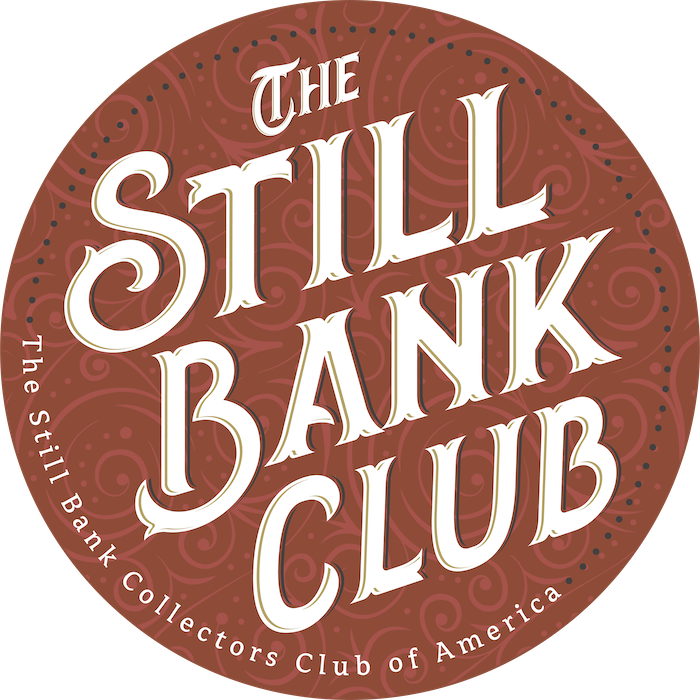The Traders Bank of Canada
Published in the August 2023 Penny Bank Post | Written by Lance G. Oldham © 2023
The Traders Bank of Canada deposit collection box bank was intended to depict the company’s corporate headquarters building. There is definitely a resemblance but the “coin bank” is a simplified version. The coin bank depicts a 3-story building while the actual office building is a 5-story structure.
The Coin Bank
The Traders Bank of Canada would have probably faded into the abyss of history if it hadn’t been for some intriguing artifacts that have survived until the present day. These were primarily the impressive deposit collection box banks that were issued by the bank for two years between 1891 and 1893. The coin banks depict the company's corporate headquarter building during this period.
The coin banks have an additional personal point of interest since mine was my first true antique souvenir building coin bank. I bought mine in 1985 and it inspired my quest to find other similar collectibles and begin my collection. It was my “alpha” piece and also the centerpiece and favorite souvenir building coin bank in my collection.
According to a number of sources only 1,500 of the banks exist (corresponding to the number of new accounts they generated). Most sources indicate they are rare. However, based on the moderate number of banks I’ve seen offered for sale from monitoring eBay and auctions, where two to three are offered per year, I believe this is an underestimate. I concur with most sources assigning typical examples a “D” rarity rating. Most of the banks have missing components, broken elements, and finish imperfections and it is extremely rare to find one that is free of defects.
Value of the Traders Bank of Canada is determined by the number of finials still intact, whether the inside of the box is included, and the overall condition of the bank. A bank with all finials intact would have twelve of them. The general price range is $160-$4,400 depending on the condition.
The coin banks were an idea of Edward “Aemilius” Jarvis, who was Inspector of the bank from 1891-1892. His was not an original idea as a number of similar deposit collection banks in the shape of buildings had also been used in the U.S. in the late 1800’s. However, this was the first and only example used in Canada. There are no manufacture’s marking on the coin banks but sources indicate they were made at a Toronto foundry.
Edward “Aemilius” Jarvis
The concept was intended to build a customer base from the largely rural province of Ontario, Canada. Anyone could apply for savings banks and receive them without cost. They were particularly aimed at children, housewives, and domestic servants. Its object was to provide a means to collect small deposits of less than one dollar since this was the normal minimum accepted by banks in this era. Domestic servants were encouraged to save at least one half of their wages and the housewife to deposit the bulk of their allowance, keeping the minimum necessary in cash, and to pay the bills by check from their bank deposits.
The deposit collection banks were designed to suit a household with four separate compartmented bins in the slide out interior box. The account numbers were punch stamped on the exterior of each bin. The banks were locked and only bank officials had the key.
Each month a bank official would come to the house via horse and buggy to collect the money and record the amount saved in each individual’s passbook.
The process of sending an official around to collect proved to be unwieldy, timeconsuming, and unsafe. As a result the project lasted for only two years at which time the savings banks were retrieved and stored. Many of the banks were eventually scrapped or sold off for one dollar apiece. This would have been a substantial sum for the average person in 1892 since it would equal a day’s wages.
History of Traders Bank of Canada
The Traders Bank of Canada began operations in 1885. Prior to constructing the headquarters building at 61-63 Yonge St. the bank was located at 46 Yonge Street. The headquarters building depicted by the coin bank was constructed in 1891 corresponding with the distribution program of the coin banks. Prior to that time, the northeast corner of Yonge & Colborne Streets was occupied by a smaller three-story building housing Buntin, Reid & Co. until 1889 (pictured below). In 1890 the site was used by two different baggage transfer companies. The only known photograph of the Traders Bank of Canada headquarters at 61- 63 is shown in the old post card pictured below in black and white.
Northeast corner of Yonge & Colborne Streets housing Buntin, Reid & Co. until 1889
Traders Bank of Canada headquarters at 61- 63
As the bank grew, the old headquarters building at 61-63 Yonge St. was no longer adequate. Demolition of the Traders building began on June 20, 1905 making room for a larger 15-story building. The new building was completed and opened in 1906 becoming the first skyscraper . . .




